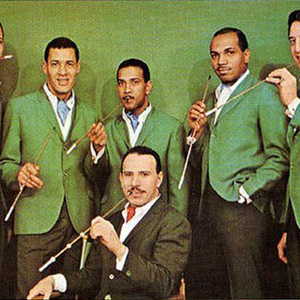
-
- 8,250
- plays
-
- 4,477
- listners
-
- 8250
- top track count
Joe Cuba, Bandleader Known as the Father of Latin Boogaloo, Dies at 78 Sign in to Recommend Twitter Sign In to E-Mail Print Reprints Share CloseLinkedinDiggFacebookMixxMySpaceYahoo! BuzzPermalink By LARRY ROHTER Published: February 18, 2009 Joe Cuba, the band leader and conga player who became known as the father of Latin boogaloo because of a string of innovative hit records in the 1960s and ’70s that fused Latin and soul elements, died in Manhattan on Sunday. He was 78 and lived in New York City. Skip to next paragraph Enlarge This Image Jack Vartoogian/FrontRowPhotos Joe Cuba performing with his sextet at S.O.B.’s in 1996. Related "Bang Bang," Joe Cuba (YouTube) The cause was a generalized bacterial infection, said Aurora Flores, a family friend and spokeswoman for his recording label. Mr. Cuba had been in and out of hospitals since hip replacement surgery last year, she said. Originally the leader of a Latin band with jazz leanings, Mr. Cuba found commercial success by mixing rhythm and blues into his music and Spanish and English into his lyrics. Hits like “Sock It to Me Baby” and “Bang Bang,” both from 1967, demonstrated a crossover popularity that was unusual for the time, appealing almost equally to Latinos, blacks and mainstream audiences. “Joe was really the pioneer in making the move to singing in both languages, and it blended very well with those up tempos he liked to use,” said the jazz and salsa pianist Eddie Palmieri, who first met Mr. Cuba in 1955, when both men were playing in the Catskills. “He takes a top position in the history of the music for that, and also because he showed what you can do with a small group.” Born Gilberto Miguel Calderon in the Spanish Harlem section of Manhattan, to parents who had migrated to the city from Puerto Rico, Mr. Cuba took up the conga drums as a teenager. He enrolled in college, but after seeing the percussionist Tito Puente in performance and striking up a friendship with him, decided to become a professional musician. After stints in several New York-based ensembles, Mr. Cuba formed his own group in the mid-1950s, at the height of the mambo dance craze. At his agent’s suggestion, he soon changed the band’s name from the Jose Calderon Sextet to the Joe Cuba Sextet. The group found work playing shows of all kinds, from weddings to Latin dance parties, up and down the Eastern seaboard. In contrast to the majority of Latin orchestras of the era, which were larger and relied on trombones and other brass instruments to define their sound, Mr. Cuba’s group went for a cooler approach. A vibraphone and piano often played the main melodic lines, floating atop a strong and assertive rhythm section. “A bastard sound” is what Mr. Cuba called the “Latin boogaloo” style he pioneered in the mid-1960s. “You don’t go into a rehearsal and say, ‘Hey, let’s invent a new sound or dance,’ ” he explained in the book “Salsa Talks! A Musical Heritage Uncovered” (Digital Domain, 2005), by Mary Kent. “They happen.” “The boogaloo came out of left field,” he said, and was the result of years of playing dances and watching to see how “the audience relates to what you are doing.” Mr. Cuba is survived by his wife, Maria Calderon; three children, Mitchell, Cesar and Lisa; and three grandchildren. The rise in popularity of Mr. Cuba’s bilingual songs and mixture of American and Caribbean rhythms coincided with the emergence of a distinct Nuyorican identity among Puerto Rican New Yorkers, and Mr. Cuba became one of the most visible symbols of that phenomenon. “He was the soul of El Barrio,” said Hector Maisonave, a veteran talent manager and show booker, “but he also knew how to break down and reach across barriers.” Read more on Last.fm. User-contributed text is available under the Creative Commons By-SA License; additional terms may apply.